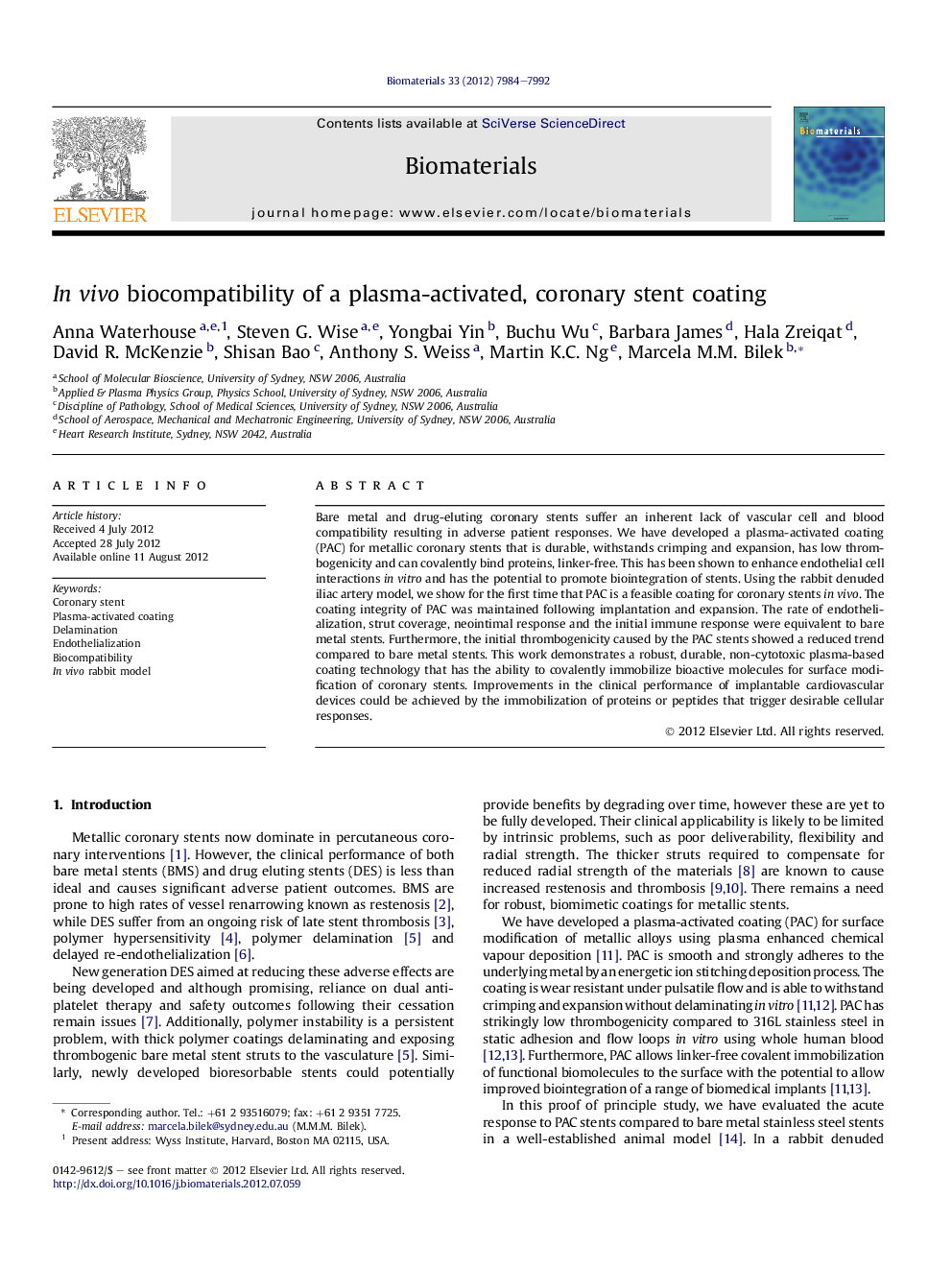| Article ID | Journal | Published Year | Pages | File Type |
|---|---|---|---|---|
| 10229078 | Biomaterials | 2012 | 9 Pages |
Abstract
Bare metal and drug-eluting coronary stents suffer an inherent lack of vascular cell and blood compatibility resulting in adverse patient responses. We have developed a plasma-activated coating (PAC) for metallic coronary stents that is durable, withstands crimping and expansion, has low thrombogenicity and can covalently bind proteins, linker-free. This has been shown to enhance endothelial cell interactions in vitro and has the potential to promote biointegration of stents. Using the rabbit denuded iliac artery model, we show for the first time that PAC is a feasible coating for coronary stents in vivo. The coating integrity of PAC was maintained following implantation and expansion. The rate of endothelialization, strut coverage, neointimal response and the initial immune response were equivalent to bare metal stents. Furthermore, the initial thrombogenicity caused by the PAC stents showed a reduced trend compared to bare metal stents. This work demonstrates a robust, durable, non-cytotoxic plasma-based coating technology that has the ability to covalently immobilize bioactive molecules for surface modification of coronary stents. Improvements in the clinical performance of implantable cardiovascular devices could be achieved by the immobilization of proteins or peptides that trigger desirable cellular responses.
Related Topics
Physical Sciences and Engineering
Chemical Engineering
Bioengineering
Authors
Anna Waterhouse, Steven G. Wise, Yongbai Yin, Buchu Wu, Barbara James, Hala Zreiqat, David R. McKenzie, Shisan Bao, Anthony S. Weiss, Martin K.C. Ng, Marcela M.M. Bilek,
